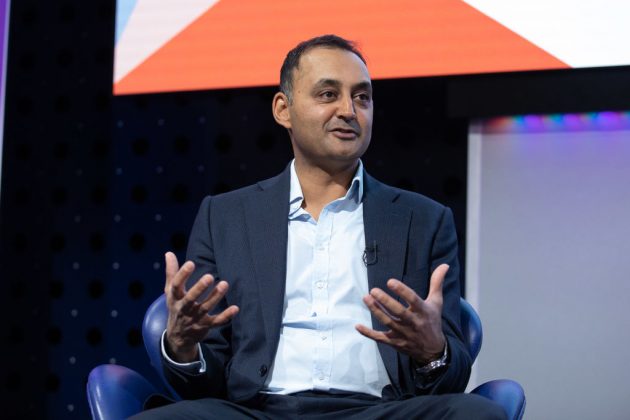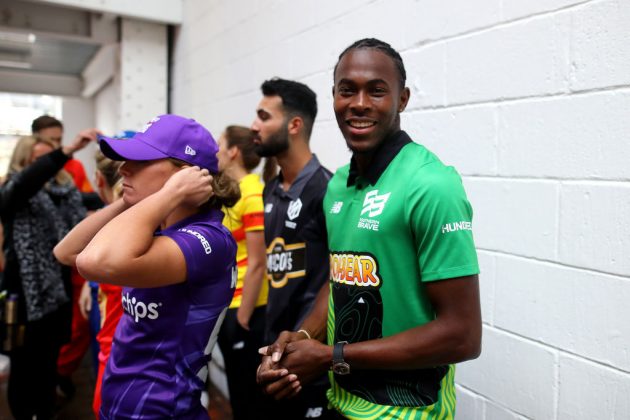The Hundred: MD Sanjay Patel on profits, participation, gender equality and winning over sceptics with English cricket’s new competition

Sanjay Patel, managing director of The Hundred, could be forgiven a few sleepless nights as Wednesday 21 July approaches.
That is when the Oval Invincibles are due to host the Manchester Originals in a women’s match that raises the curtain on the controversial new competition designed to breathe new life into domestic cricket.
Patel has as much skin in this game as anyone. As well as running the show, he also persuaded English cricket’s top brass to pursue the innovative but deeply divisive 100-ball format. Depending on its success, he will either be hailed as a genius or ridiculed.
If that were not enough to keep him awake, Covid-19 has begun wreaking havoc across the sport again. Rising cases have threatened to disrupt The Hundred, which has already been delayed a year by the pandemic.
“Everything is really under control – I promise,” he joked last week.
The Hundred ‘will make a profit in year one’
Patel’s breeziness is not all an act. While there is an acceptance that the competition will likely be affected by Covid – and some overseas stars such as Australia batsman David Warner and South Africa bowler Kagiso Rabada have already pulled out – the England and Wales Cricket Board (ECB) has categorically ruled out postponing The Hundred for a second time.
“I have lived in the knowledge that it was always going to happen this year. Even if it was behind closed doors we were going to go ahead,” he tells City A.M.
Patel, the ECB’s former chief commercial officer, also needn’t worry about The Hundred leaking money if the family crowds it is aimed at don’t take the bait.
The competition has five-year broadcast deals with Sky and the BBC worth around £170m, and consumer brands like it. Cazoo, KP Snacks and Vitality are among those bankrolling a competition that will feature England heroes Ben Stokes, Heather Knight, Jofra Archer and Nat Sciver. The ECB expects to make a £10m surplus on £50m of revenue in the first year of The Hundred.
“We’re already going to make a net profit in year one,” he says. “Our ticket revenue is a small percentage of overall revenue, so we’ve already secured the majority of the revenue we’ll be getting for next year.”
Will English cricket’s big gamble convince sceptics?
If logistics and finances are two of The Hundred’s biggest hurdles, then the other is public opinion.
Cricket traditionalists – including counties, some of whom claim they have been railroaded into accepting the competition – have decried it, questioning the need for a new format and bemoaning the replacement of county teams with city-based sides. One thing all can agree on: it’s a gamble.
It’s worth remembering, though, that the ECB’s gamble is on attracting a new audience to cricket and stimulating participation rates among boys and girls.

That is why it is marketing it in neon pink and green, incorporating live music at matches and making games available not just on free-to-access BBC platforms but also, in the case of the women’s fixtures, on Sky Sports’ YouTube channel. Whether it convinces the Barmy Army who follow England on Ashes tours is, to Patel, a moot point.
“I don’t think that’s our objective,” he says. “Our objective is to get more people involved in the game. If we get more kids to pick up a bat and ball then, if there’s sceptics out there, I’m okay with that.”
Patel says The Hundred has gone down well at Beaconsfield under-8s, where he coaches. “If that excitement is translated across the UK then I think we’ve done our job.”
How The Hundred is promoting gender parity
The ECB also wants The Hundred to be “a catalyst for gender parity in sport”, as a launch event at the Oval this month billed it.
It is putting its money where its mouth is too, offering equal prizes across both competitions, scheduling women’s matches on the same ticket as their male counterparts, and using gender-neutral terminology such as batter, rather than batsman.
That wasn’t always the plan, however, as Patel admits. When The Hundred was conceived in 2017, it was as a men’s competition. The ECB had vague ideas about a female version but only as the concept crystallised did they realise it suited their aim of elevating the women’s game to bundle it with the men’s. It has also given the marketing another zeitgeisty angle.
“When you think about what we want The Hundred to be, and that is a modern, pogressive brand, and when we looked at what women’s cricket needed, it became an obvious decision,” he says. “A lot of sports competitions now are adding in a women’s competition. What we don’t want this to be is an add-on. We want it to be part of the fabric from day one.”
‘We won’t see Hundred’s full potential in year one’
That’s why a women’s match has been chosen to open the Hundred next Wednesday; it’s a calling card, a statement of intent. How many spectators will be at the Oval remains to be seen. Unlike the first men’s fixture the following day, it has not sold out. Patel admits attracting those sorts of crowds won’t “happen overnight”.
“I think people need to be patient in terms of attendance,” he says. “It’s something that you need to build over time, but you have to start somewhere. For us, getting people in to watch the women’s game is important but we’re not going to put numbers [targets] on that.”
Selling tickets for either competition “has been difficult because we’re selling a new tournament during a global pandemic, and asking families to come to a mass-market event,” he adds. “I think people can understand there’s going to be hesitancy. The pandemic has probably meant we won’t see the full potential of The Hundred in year one, but we will see it in years to come.”
Indian cricket a model, competitor – and partner?
Not all aspects of The Hundred have been mirrored across both genders. While the men’s competition featured a televised live US sport-style draft to allocate players to the eight teams, the women’s did not. “We don’t want to have parity just for the sake of it,” says Patel, who adds that the women’s competition will be ready for a draft in “three or four years”.
Giving men and women equal billing has “already been a success”, he insists. “You go back three or four months and look at the coverage, it’s raised the profile already.” Patel is excited that some of India’s leading women will be playing in The Hundred. “One of my favourite players, Harmanpreet Kaur, is playing for Manchester Originals and I can’t wait to see her.”

India’s male stars remain locked out of The Hundred as their own paymasters don’t want to help a rival to the Indian Premier League, the glitzy, all-action cricket product that the ECB hopes to replicate. That could change – there are “ongoing conversations”, says Patel – especially if rumoured investment from the subcontinent were to pour into the new competition. Overnight, it would crank up the competition’s appeal to Asian cricket fans.
First, though, The Hundred must win over a domestic audience already drowning in live sport, a section of whom are not just ambivalent but hostile. On Wednesday the first ball will be bowled, but the ECB has long since rolled the dice. “I’m just excited,” says Patel. “I can’t wait.”
